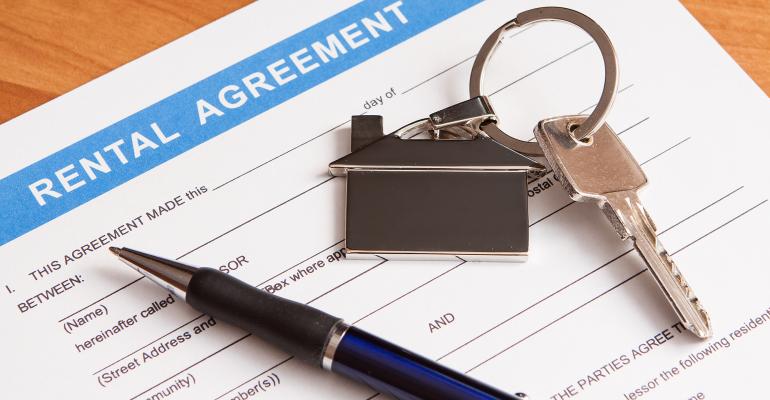One of the essential mandates for any property manager is the management of risk. Not surprisingly, that kicked into high gear in 2020 as a result of the pandemic. It sent real estate managers and owners scrambling to, first, maintain safety for their families, employees and clients and, second, to help ensure protection against litigation. Along the way, a little phrase—force majeure—rose from a small clause in lease documents to major headlines.
In actuality, for those pursuing the highest in professional achievement, the pandemic only expanded our array of management tools, honed with crises ranging from simple trip-and-fall issues to major catastrophes like wildfires, hurricanes and active shooters.
The importance of those capabilities is underscored by Dustin Read, PhD/JD, an associate professor at Virginia Tech and a regular contributor to IREM leadership programs. In Business Planning & Budgeting: The Role of the Real Estate Asset Manager, he writes that property managers, in particular those who aspire to asset management positions, “continually take steps to identify and evaluate defensive investments with the potential to keep properties ahead of competitors and increase tenant retention.”
Boiling that down to its essence, it means risk management. IREM has long promoted the partnership between asset and property managers and the recognition of the latter as a strategic influence on planning, budgeting and, ultimately, ROI. Nowhere is that truer than in the pursuit of minimized risk. And that pursuit begins at the beginning, ensuring upfront in our relationships that we have in place proper insurance coverages, airtight leases and rock-solid management agreements.
This is a function of removing these protections away from the “us-versus-them” mentality and having frank conversations with all stakeholders—upfront—about needs, wants and expectations. Yes, negotiation will be a part of these conversations. In a sort of game of hot potato, everyone will try to push responsibility onto the other participant’s shoulders. Keep the goal in mind to reach consensus. Then make sure all the above-mentioned documentation reflects that consensus.
Of course, COVID-19 rendered 2020 anything but normal, and it challenges us to achieve new levels of risk management. We’re seeing an exodus from urban cores as people seek more greenery, more open spaces and less congestion. In fact, according to a recent AppFolio survey, 60 percent of renters say the pandemic has changed their preferences on where to live. Breaking that down, 44 percent of that group said the need was for less populated locations. Thirty-one percent sought a change of scenery. A quarter of that 60 percent wanted to be closer to family. Finally, 21 percent said they’d continue working remotely and no longer need to commute.
The implications for property managers here are huge. It speaks directly to our ability to provide newly defined necessities and ultimately to increase occupancy. It would be wonderful if every property was designed to accommodate gardens and walking and bike paths. Or that every multifamily building had the flexibility to install a dedicated office space. Unfortunately, not all of them do.
In light of that reality, we turn once again to our insurance policies for protections against pandemic-driven liabilities. These could range from work interruptions to broken leases and non-payment of rents. In such cases, force majeure clauses can be a double-edged sword. Depending on the specific wording, force majeure clauses can cover unforeseeable circumstances—such as hurricanes, floods, tornadoes, volcanic eruptions, mudslides and wildfires,—but may not include disease or fallout from pandemics. If a force majeure clause is included in a contract, what constitutes “force majeure” must be specified. Some cases have been successful, and others have not. As you can imagine, there’s currently a lot of litigation surrounding force majeure.
Some cases of lost business, due to quarantines and lockdowns, have also been tested recently, with mixed results. Challenges arise as to whether lockdowns caused by government mandates can be included as loss of business.
Again, the best answer comes down to documents of engagement—leases, management agreements and insurance contracts—that are as fireproof as possible. Many CPMs—and certainly we at Watts Realty—make sure we have language in our management agreements that require ownership to provide coverage for our services. We also recommend incorporation, no matter the size of your management firm, to protect your people from personal legal exposure. Needless to say, consult your attorney for details. If you don’t have an attorney, by all means, get one.
No property is immune from disaster, no matter its size or location. So, risk management needs to be 360 degrees. That means continually identifying and evaluating issues that can occur on a property, and ensuring they are reflected in leases, management agreements and insurance policies. Failing to do so is doing a disservice to yourself, your ownership clientele, your residents and tenants.
On the flip side, doing so takes the property manager miles ahead as a strategic influence for all of your constituents.
Chip Watts, CPM, CCIM, is the 2021 president of the Institute of Real Estate Management. In addition, he serves as president and executive CPM for Watts Realty Co. Inc., based in Birmingham, Ala.





